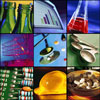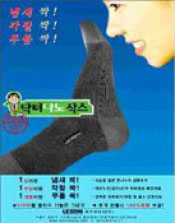Ten things you should know about nanotechnology
 |
7) Commercial applications |
Don't be fooled by crazy figures that tell you that the "nanotechnology market" is already hundreds of billions of dollars worth and will be worth trillions in just 5-6 years. Although there are a lot of exciting research results coming out of labs, the hard reality today is that most nanotechnology products are using only rudimentary nanostructures (e.g. dispersions in catalysts, nanoparticles in coatings and thin films, layers in electronics) incorporated in existing products or systems.
This is how some market research reports – the ones that predict trillion dollar “nanotechnology markets” – arrive at their vastly inflated numbers: First thing you need to understand is that the market size figures do not reflect the total value of nanotechnology-based materials included in products, but the total value of the final products. Thus a tenth of a gram of nanomaterials costing 10 cents may be included in a drug costing $100 per dose.
Just to be clear here: this means that the nanotechnology market size, as compiled by some consultants, includes the $100 for the entire drug dose, not it's actual 10 cents nanomaterial ingredient. In this example they are therefore expanding their definition of "market" by a factor of 1,000 simply by including the entire product's value, not just the nanotechnology component in it. This methodology is then consequently applied to all industry sectors – whether it is the $300 golf club that contains minute quantities of carbon nanotubes or the $90,000 car that features a few liters of paint that contains nanoparticles – the market size figure always includes the cost of the finished product. (read more here: "Debunking the trillion dollar nanotechnology market size hype")
Of course, the people who are trying to sell you their expensive market reports argue that if a product wouldn't exist without nanotechnology then it's fair to count the entire product's value. Their favorite example is that if a pharmaceutical drug can't be formulated so that it possesses a new and improved delivery system and efficacy without the "nano" part, e.g. nanoparticles, then the new drug wouldn't exist. This argument has its merits if it really concerns a new product.
But in reality, most products deemed to be "nanotechnology products" would exist without nanotechnology as well – be it the Mercedes or the antibacterial socks – and here the "nano" part is just a feature improvement as part of manufacturers' constant drive to improve their products. Even in the case of the drug, it probably has existed before, just now it has been improved and is more effective.

A nice car, no doubt. But just because it features a scratchfree paint finish with nanoparticles, does this mean that this $90,000+ car contributes its full value to the "market for nanotechnology"?
So, where is nanotechnology used today? The Project on Emerging Nanotechnologies maintains a database of consumer products that contain nanoparticles and nanomaterials. Browsing through it, it becomes clear very quickly that – apart from the advanced semiconductor structures increasingly found in computers and consumer electronics — today's "nanotechnology" products are quite "primitive" and a far cry from promises of revolutionary products and applications in nanoelectronics and nanomedicine.
Most products are defined as "nanotechnology product" because they contain nanoparticles in some form or other. For instance, many antimicrobial coatings contain silver in nanoscale form; food products and cosmetics contain nanoparticles; and some products are partially made with composite materials containing nanomaterials (e.g. carbon nanotubes or carbon nanofibers) to mechanically strengthen the material.

Nano-silver socks from the Project on Emerging Nanotechnologies' consumer products database.
So, while we still are in the "Stone Age" of nanotechnologies, the systematic control and manufacture at the nanoscale is envisioned to evolve in four overlapping generations of new nanotechnology product types that start with nanoscale building blocks and evolve over time into complex heterogeneous systems. Each anticipated generation of products will provide a nanotechnology base for further innovation, leading to succeeding generations of products of increasing complexity and functionality (source: From a report by the Interagency Working Group (IWG) on Manufacturing Research and Development: "Manufacturing the Future" (pdf, 3.3 MB)
First Generation (beginning ~2000): passive nanostructures, illustrated by nanostructured coatings, nanoparticles, dispersion of nanoparticles, nanocomposites, and bulk nanostructured materials — nanostructures made of metals, polymers, ceramics; bio-building blocks. The nanotech sunscreens and golf balls that you read about are only incremental improvements of previous products where thanks to the use of such passive nanostructures - in the case of sunscreen zinc oxide or titanium dioxide; and carbon nanotubes in the case of golf balls - better performance characteristics could be achieved.
Second Generation (beginning ~2005): active nanostructures, illustrated by transistors, amplifiers, targeted drugs and chemicals, biological and non-biological sensors, actuators, and adaptive structures.
Third Generation (beginning ~2010): three-dimensional nanosystems and systems of nanosystems using various synthesis and assembly techniques such as bio-assembly, networking at the nanoscale, and multiscale architectures.
Fourth Generation (beginning ~2015-2020): materials by design and heterogeneous molecular nanosystems, where each molecule in the nanosystem has a specific structure and plays a different role. Molecules will be used as devices, and from their engineered structures and architectures will emerge fundamentally new functions.
